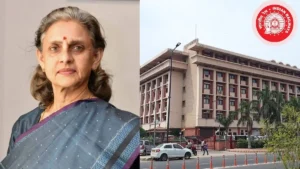In a first-of-its-kind appointment, Indian cricketer Sanju Samson has been named the official ambassador for the English Premier League (EPL) in India. The move marks a major step in the EPL’s strategy to expand its presence in the Indian subcontinent by leveraging local sports icons with pan-India appeal.
Strategic Partnership
Sanju Samson’s new role aims to bridge India’s cricketing passion with the growing interest in international football, especially among youth and urban sports fans. The EPL has chosen Samson for his,
- Strong social media reach
- Proven track record as a sportsperson
- Deep-rooted interest in football, especially as a lifelong Liverpool FC fan
He will now act as a liaison between Indian fans and the EPL, participating in outreach events, brand campaigns, and fan engagement programs.
Launch Event & Football Connect
- At a fan engagement event in Mumbai, Samson met Michael Owen, legendary former striker for England and Liverpool. The event, held at the NESCO Centre, featured a live screening and community activities, showcasing the EPL’s increasing cultural integration with Indian audiences.
- Owen, impressed by the turnout and football enthusiasm, remarked on the growing number of Indian fans, especially supporters of clubs like Arsenal, Manchester United, and Liverpool.
Football Roots in Kerala
- Sanju Samson’s connection with football goes beyond fandom. Hailing from Kerala, a state known for its footballing culture, Samson also serves as the brand ambassador of Kerala Blasters FC, one of the top teams in the Indian Super League (ISL).
- His dual involvement in cricket and football reflects Kerala’s rich and diverse sporting heritage. From hosting matches at Jawaharlal Nehru Stadium, Kochi, to producing top-tier footballers, Kerala has long been a football hotspot.
Broader Implications
- The appointment is expected to boost EPL viewership and fan engagement in India.
- It reflects the rising popularity of European football leagues among Indian youth.
- It also shows how Indian sportspersons can influence cross-sport promotion and elevate football’s brand appeal in a cricket-dominated nation.
- Sanju Samson now embodies a symbol of India’s evolving sports culture, where athletes cross traditional boundaries to promote holistic engagement across disciplines.
Important Takeaways
- Sanju Samson appointed as EPL’s official ambassador in India
- Event venue: EPL fan park event at NESCO, Mumbai
- State focus: Kerala as India’s football hub
- EPL’s Goal: Increase fan engagement, deepen cultural footprint in India



 Jeyandran Venugopal Appointed as Preside...
Jeyandran Venugopal Appointed as Preside...
 Aparna Garg Takes Charge as Member (Fina...
Aparna Garg Takes Charge as Member (Fina...
 Manali Kshirsagar Becomes Nagpur Univers...
Manali Kshirsagar Becomes Nagpur Univers...







